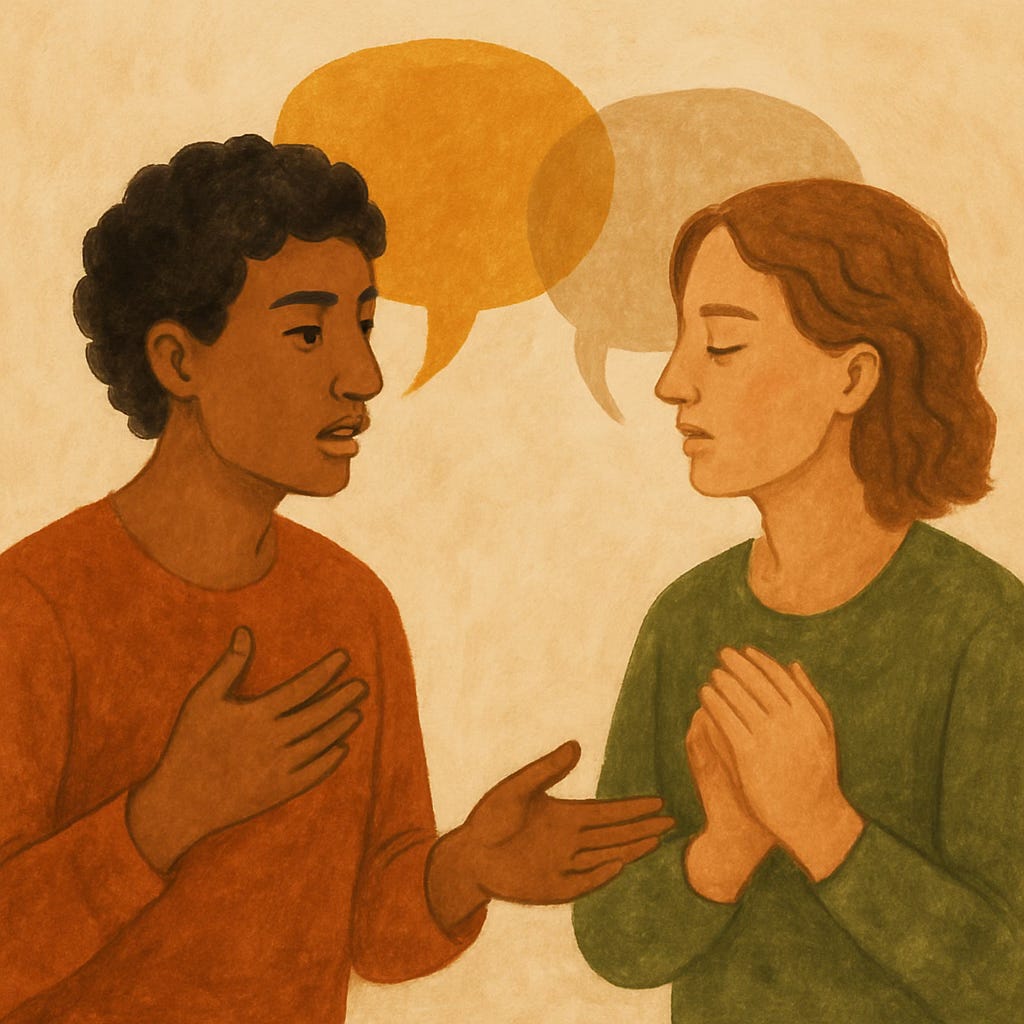Nonviolent Communication for Activists
Speaking to be Heard, Listening to Understand
Activism, at its heart, is about connection.
Connection to a cause, to a community, to a future we want to live in.
Yet, the passion that drives our work can also become a barrier if we lack the tools to communicate effectively, especially in moments of conflict or urgency.
Nonviolent Communication offers a path to bridge these divides.
It’s a way of speaking and listening that focuses on connection over coercion, understanding over argument, and compassion over blame.
In a world saturated with crisis, fear, and urgency, it can be tempting to use confrontation as a primary tactic.
But, as many movements have discovered, confrontation alone often leads to burnout, division, and isolation.
Nonviolent communication provides a way to sustain our efforts over the long haul, to build movements that are as resilient and compassionate as the futures they seek to create.
The Core Principles
At its core, nonviolent communication is about transforming the way we speak and listen, moving from judgment and blame to compassion and connection.
It rests on four key components:
Observation Without Judgment
Describe what you see or hear without adding interpretation or blame.
Instead of, “you never show up for meetings,” try “I noticed you weren’t at the last two meetings.”
Identifying Feelings, not Blame
Express how you feel without attaching it to the actions of others.
Instead of, “you make me so angry,” try, “I feel frustrated when I see that my concerns aren’t being addressed.”
Understanding Needs, Not Demands
Identify the unmet need behind your feeling.
Instead of, “you’re ignoring me,” try, “I need to feel heard and valued in our work together.”
Making Clear Requests, Not Ultimatums
Make actionable, positive requests that invite collaboration
Instead of, “you need to start listening to me,” try, “would you be willing to take a few minutes to hear my perspective?”
The Power of Nonviolent Communication in Activism
Activism can feel like a constant battle against entrenched systems, but nonviolent communication shifts the focus from opposition to possibility.
It allows us to:
Transform Conflict into Connection: By framing our frustrations as unmet needs rather than personal attacks, we open space for dialogue and understanding.
Build Sustainable Movements: Nonviolent communication helps prevent burnout by fostering mutual respect and emotional resilience within activist circles.
Avoid Isolation and Polarization: It keeps conversations focused on shared values, reducing the risk of alienation and division.
What are you thinking about after reading this? Feel free to leave a comment—I’d love to hear.
The work of social change is a marathon, not a sprint.
In activism, nonviolent communication honors the dignity of all life, that sees the humanity even in those who oppose us, and that holds space for the slow, difficult, beautiful work of building a just future.
Resources:
This is a space for reflection, not just information. If something struck you, or you’re holding something you want to share, my inbox is open. Feel free to reply or send me a message.






Aww, thank you dear Stephanie!! I so appreciate your support and deep, clear reflections. 🥰
"Speaking to Be Heard, Listening to Understand" could change the world entire. So much to think on here that matters for us all. Thank you as always for your heartfelt brilliance Bri! <3